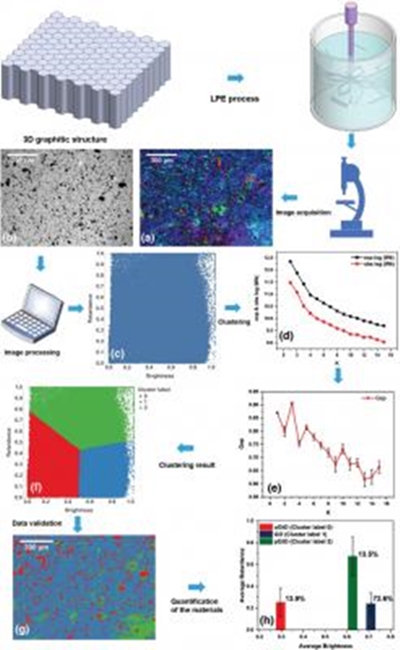|
NOVIDADES
Monash University scientists have created an innovative method to help industry identify high quality graphene cheaper, faster and more accurately than current methods. The researchers used the data set of an optical microscope to develop a machine-learning algorithm that can characterize graphene properties and quality, without bias, within 14 minutes. This technology could be a game changer for hundreds of graphene or graphene oxide manufacturers globally. It will help them boost the quality and reliability of their graphene supply without need for time-consuming procedures. Currently, manufacturers can only detect the quality and properties of graphene used in a product after it has been manufactured. Through this algorithm, which has the potential to be rolled out globally with commercial support, graphene producers can be assured of quality product and remove the time-intensive and costly process of a series of characterization techniques to identify graphene properties, such as the thickness and size of the atomic layers. Professor Mainak Majumder from Monash University’s Department of Mechanical and Aerospace Engineering and the Australian Research Council’s Hub on Graphene Enabled Industry Transformation said: “Graphene possesses extraordinary capacity for electric and thermal conductivity. It is widely used in the production of membranes for water purification, energy storage and in smart technology, such as weight loading sensors on traffic bridges.” “At the same time, graphene is rather expensive when it comes to usage in bulk quantities. One gram of high quality graphene could cost as much as $1,000 AUD ($720 USD) a large percentage of it is due to the costly quality control process. Therefore, manufacturers need to be assured that they’re sourcing the highest quality graphene on the market. Our technology can detect the properties of graphene in under 14 minutes for a single dataset of 1936 x 1216 resolution. This will save manufacturers vital time and money, and establish a competitive advantage in a growing marketplace.” The most widely used method of producing graphene and graphene oxide sheets is through liquid phase exfoliation (LPE). In this process, the single layer sheets are stripped from its 3D counterpart such as graphite, graphite oxide film or expanded graphite by shear-forces. But, this can only be imaged using a dry sample (i.e. once the graphene has been coated on a glass slide). “Although there has been a strong emphasis on standardization guidelines of graphene materials, there is virtually no way to monitor the fundamental unit process of exfoliation, product quality varies from laboratory to laboratory and from one manufacturer to other,” Dr. Mahdokht Shaibani from Monash University said.  Framework for quantitative analysis. Image from Advanced Science
The researchers applied the algorithm to an assortment of 18 graphene samples – eight of which were acquired from commercial sources and the rest produced in a laboratory under controlled processing conditions. Using a quantitative polarized optical microscope, the team designed a technique for detecting, classifying and quantifying exfoliated graphene in its natural form of a dispersion. To maximize the information generated from hundreds of images and large numbers of samples in a fast and efficient manner, the researchers developed an unsupervised machine-learning algorithm to identify data clusters of similar nature, and then use image analysis to quantify the proportions of each cluster. The team said this method has the potential to be used for the classification and quantification of other two-dimensional materials. Scimex. Posted: September 01, 2020.
|
|||||||||||||||||||||||||